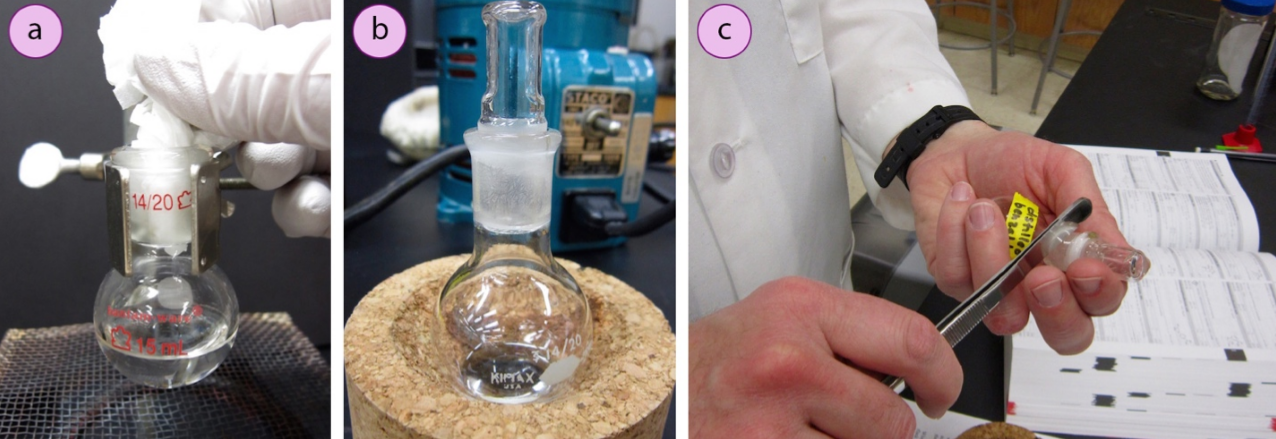1.2B: Juntas de vidrio esmerilado
- Page ID
- 73982
La mayoría de la cristalería orgánica utiliza “juntas de vidrio esmerilado”, que tienen un aspecto esmerilado. Están rectificados con precisión a cierto tamaño (lo que los hace caros) y tienen juntas externas (hembra) e internas (macho) para que las piezas puedan conectarse entre sí con un ajuste apretado (Figura 1.1a). Los tamaños comunes de las juntas son 14/20, 19/22 y 24/40. El primer número se refiere al diámetro interno (en milímetros) de una articulación hembra o al diámetro exterior de una articulación macho. El segundo número se refiere a la longitud de la articulación (Figura 1.1b).
Es mejor si las juntas de vidrio esmerilado están libres de productos químicos cuando las piezas están conectadas, o bien los compuestos pueden sufrir reacciones que hacen que las juntas se “congelen” juntas o se vuelvan inseparables. Sólido en la junta también puede comprometer el sello entre las piezas. Si los residuos químicos llegaran a la articulación durante la transferencia (Figura 1.1c), la junta debe limpiarse con un paño KimWipe (tejido sin pelusa, Figura 1.2a) antes de conectar con otra pieza. El derrame en la articulación se puede minimizar mediante el uso de un embudo.

Las figuras 1.2 b+c muestran una junta “congelada” (observe el residuo en la junta esmerilada), donde el benzaldehído se arrastró dentro de la articulación durante el almacenamiento y probablemente se oxidó para sellar el matraz de fondo redondo y tapar juntos. Para separar una articulación congelada, primero trate de torcer suavemente las dos piezas una de la otra. Si eso falla, toque suavemente la junta con una espátula u otro equipo (Figura 1.2c). Si eso falla, a continuación intente calentar la junta en un baño de agua caliente (el calor puede causar la expansión de la junta externa) o sonicar el matraz si hay un sonicador disponible. Como último recurso, consulte a su instructor, y es posible que calienten la articulación brevemente con una pistola de calor. La junta congelada de la Figura 1.2 tuvo que calentarse para separar las piezas.



